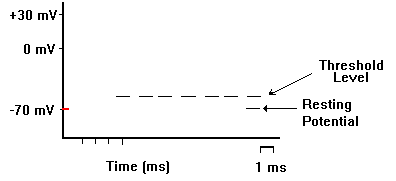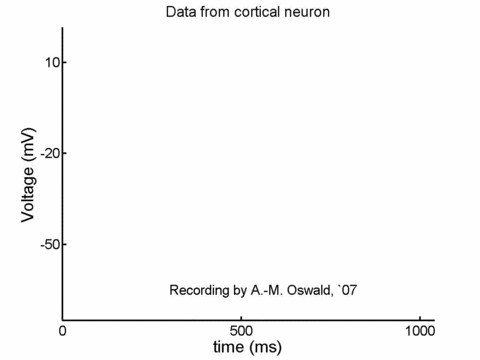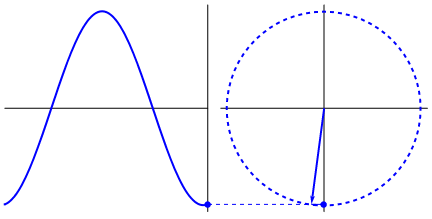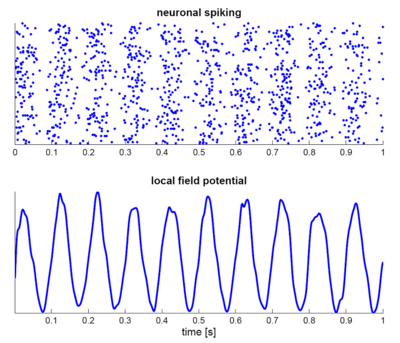Modelling Neurons as Kuramoto Oscillators
(Hit the spacebar to continue)
How do neurons behave? Neurons...
- Spike regularly
- Spike together (or at least like to and try to)
- Spike noisely
- Spike responsively (to deep brain stimulation)
Neuron: A Brief Introduction

(Source: leavingbio.net)
1. Neurons spike regularly
Period = average time in between spikes (i.e. 0.3s)
Frequency = 1/Period (i.e. 1/0.3s = 3.33 Hz)

(Source: whydomath.org)
1. Neurons spike regularly
Neuron spikes can be represented as an oscillator, with each "lap" around the orbit representing a neuron spiking.
Then, the period of the accompanying sine wave of the oscillator matches the period of the neuron.

(Source: imgur.com)
2. Neurons spike together (or at least like to and try to)
Populations of neurons affect behavior. When enough neurons spike in synchrony, a strong enough signal is propogated to affect behavior (i.e. tremor in Parkinson's disease patients).

(Source: wikipedia.com)
2. Neurons spike together (or at least like to and try to)
We can represent a population of neurons as oscillators and observe their synchrony.
3. Neurons spike noisely
Many different factors (i.e. neurotransmitters, upstream neuronal signals, etc.) influence a single neuron's spike. Thus, neurons don't always consistently fire at the exact same rate (and in exact synchrony with other neurons).

(Source: wikipedia.com)
3. Neurons spike noisely
Here's how we can represent a noisy population of neurons as oscillators.